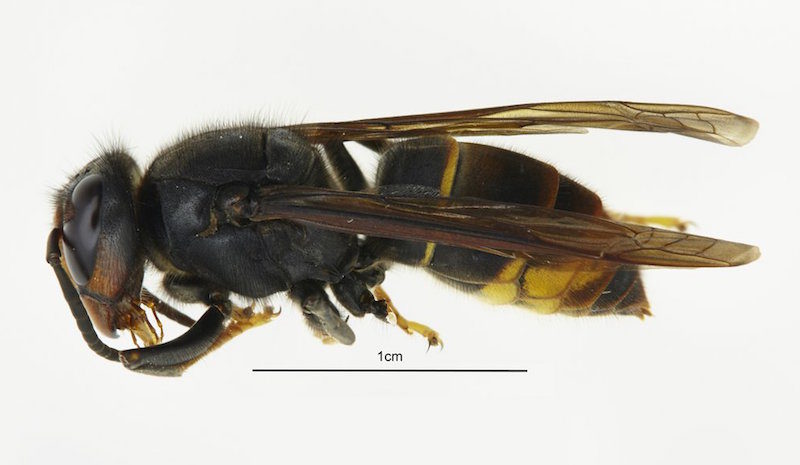Asian hornet in the UK
The National Bee Unit has confirmed the discovery and identification of an Asian hornet in Tetbury, Gloucestershire. The press release has further details.
These hornets are smaller and darker than the European hornet. Note in particular how dark the abdomen is, with only the fourth segment predominantly yellow (in contrast with our European hornet where at least half of the abdomen is yellow). The National Bee Unit has a very useful guide to identifying the Asian hornet (Vespa velutina) and distinguishing it from the European hornet (Vespa crabro).
Inevitably there’s going to be a lot of statements about “the end of beekeeping as we know it” and speculation of the impact it will really have on our colonies. Time will tell whether it’s been identified early enough to eradicate, how it arrived in deepest Gloucestershire and where it came from.
The Asian hornet has been established and spread widely in France since inadvertent importation in 2004 from China. It was discovered in the Channel Islands earlier this summer. It’s arrival on the mainland was expected, but is nevertheless disappointing.

Join the discussion ...